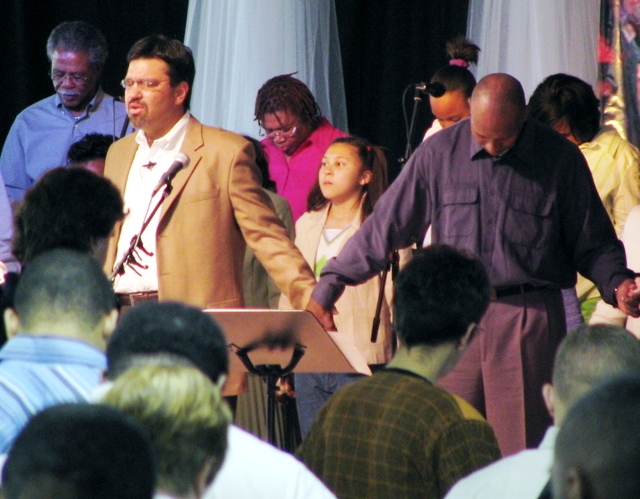For the last 11 years, we as a church have been trying to develop a multi-ethnic church. Even though we are not exactly where we want to be, we are committed to making some progress in this area. This is probably one of the hardest goals for a church to reach.
Through various sermons, talks and discussions, we have been trying to convince people in our church that it is on God’s heart for us to build a multi-ethnic church. Even trying to appeal from the perspective of what heaven will be like has not been enough to move people to live in reconciled relationships with people who are different from them.
I will never forget the class that I took in seminary. It was entitled “The Church Growth Movement.” What young seminarian does not want to grow their church? What young seminarian does not want to be the next Billy Graham?
Most of the materials was from Donald A. McGavran, who was a 3rd generation missionary to India. In his frustration of not seeing many conversions, he began to ask some hard questions and finally wrote his famous book, “The Bridges of God” where he concluded that people “become Christians fastest when least change of race or clan is involved.” Then in 1970 with C. Peter Wagner, he wrote “Understanding Church Growth” where they introduced the “Homogeneous Unit Principle.” This principle states that people when people do not have to cross racial, linguistic or class barriers then churches will grow the fastest.
So for the last 40 some years, we have seen churches that are so desperate for growth that they target people who are from similar social, ethnic or cultural background. The result? Churches grew. It even began to spread to college campuses where now there are ministries that are specially focused on African-Americans or Asian-Americans.
We have all accepted this as normal and did not really question it too much. Today, we see how most churches and ministries are homogeneous. But is this God’s intent?
In light of everything that is going on around the world, the Gospel message has to be able to bring reconciliation amongst racial groups.
Mark DeYmaz in his new book, “Building a Healthy Multi-ethnic Church: Mandate, Commitments and Practices of a Diverse Congregation,” talks about some of the lessons that he learned through his church’s journey.
He said something pretty provocative – “While churches do indeed grow fastest when they are homogeneous, I am not so sure they grow biblically.”
What does a biblically functioning church look like? What good is it if a church grows numerically but they are not growing in discipleship and addressing various issues that break the heart of God?
What drives people to naturally desire homogenous groups?
Well, from experience, we have seen that “comfort, contentment and conceit” have always been a strong driving force for people to hang out with people who are similar to themselves. It is incredible to see how the human heart hates “discomfort, difficulties, and dissension.”
In a couple of weeks we are going to start a whole new series on Sunday Celebration called, “Atmosphere.” One of the parts of this series we are going to cover the topic of “diversity.” It might be an uncomfortable, unusual, and unexpected experience but I am praying that God will use that Sunday Celebration to awaken something in us.
Check out Pastor Mark DeYmaz’s advertisement for his book. It was pretty powerful.
Watch the presentation here.

It is encouraging to see that there is another church that likes to hold hands as they pray 🙂



